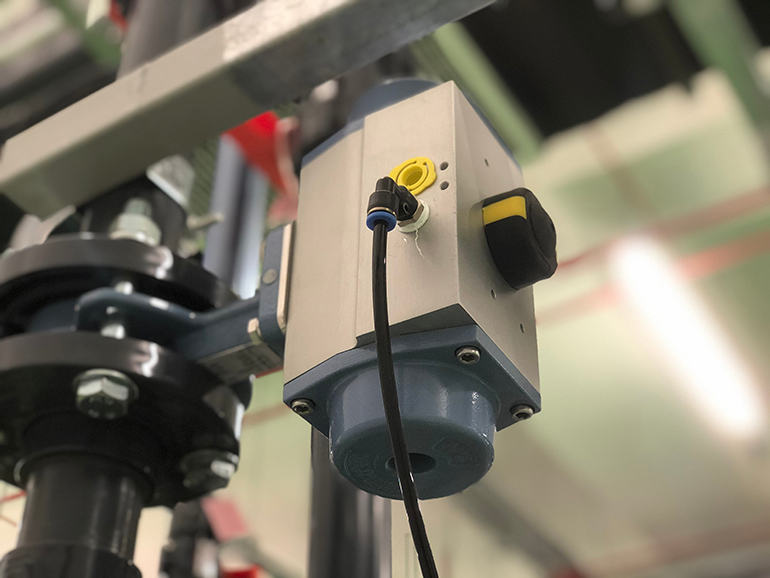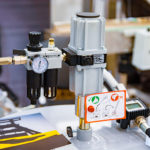By Justin Fluegel, Contributor
Controlling the flow of air within a pneumatic circuit can be done with an electropneumatic mass flow control valve. Flow within a fluid power circuit is hard to visualize. For a pneumatic system, imagine having just inflated a balloon, holding the end of balloon tight admiring the efforts of your huffing and puffing. You now adjust your fingers and watch the balloon deflate: faster or slower depending on how tight your fingers compress the opening to the balloon (orifice).

Electropneumatic flow valves combine the flow control with an electrically controlled proportional solenoid. These valves require either a controller of their own or the control signal is integrated into a PLC. What makes these valves unique is the flow can be adjusted electronically in real time based on feedback from the machine. This allows the speed at which the actuators move to be controlled.
The electrical solenoid can be actuated by either voltage or amperage from the controller/PLC. Typically, a voltage drive solenoid uses 0 – 10 voltage direct current (VDC), while an amperage driven solenoid uses a current of 4 to 20 mA. These electrical values are programmed in proportion to the mass flow rate of the electropneumatic flow control. As an example, 1-V change in the voltage to the solenoid would change the flow by 10 scfm in an application with a range of 0-100 scfm. Mass flow valves are also sized in metric using liters per minute (lpm).
An important nuance between hydraulic and pneumatic mass flow controllers is the impact of temperature on the performance of the valve. In a hydraulic system, temperature impacts on the compressibility of the liquid are less noticeable; however, in pneumatics, the impact of temperature is noticeable on the density of a gas.
Please recall the ideal gas law PV = nRT. (P) Pressure times (V) volume = (n) amount of gas times(R) ideal gas coefficient times (T) is temperature. As the temperature of a gas increases, the density of the gas decreases in a direct correlation which the volume of gas increases.
Depending on the temperature range of the air entering the valve, it might require an electropneumatic flow valve that compensates for the air temperature or be programmed into the PLC. This will maintain a constant flow rate through the valve regardless of temperature.






Leave a Reply